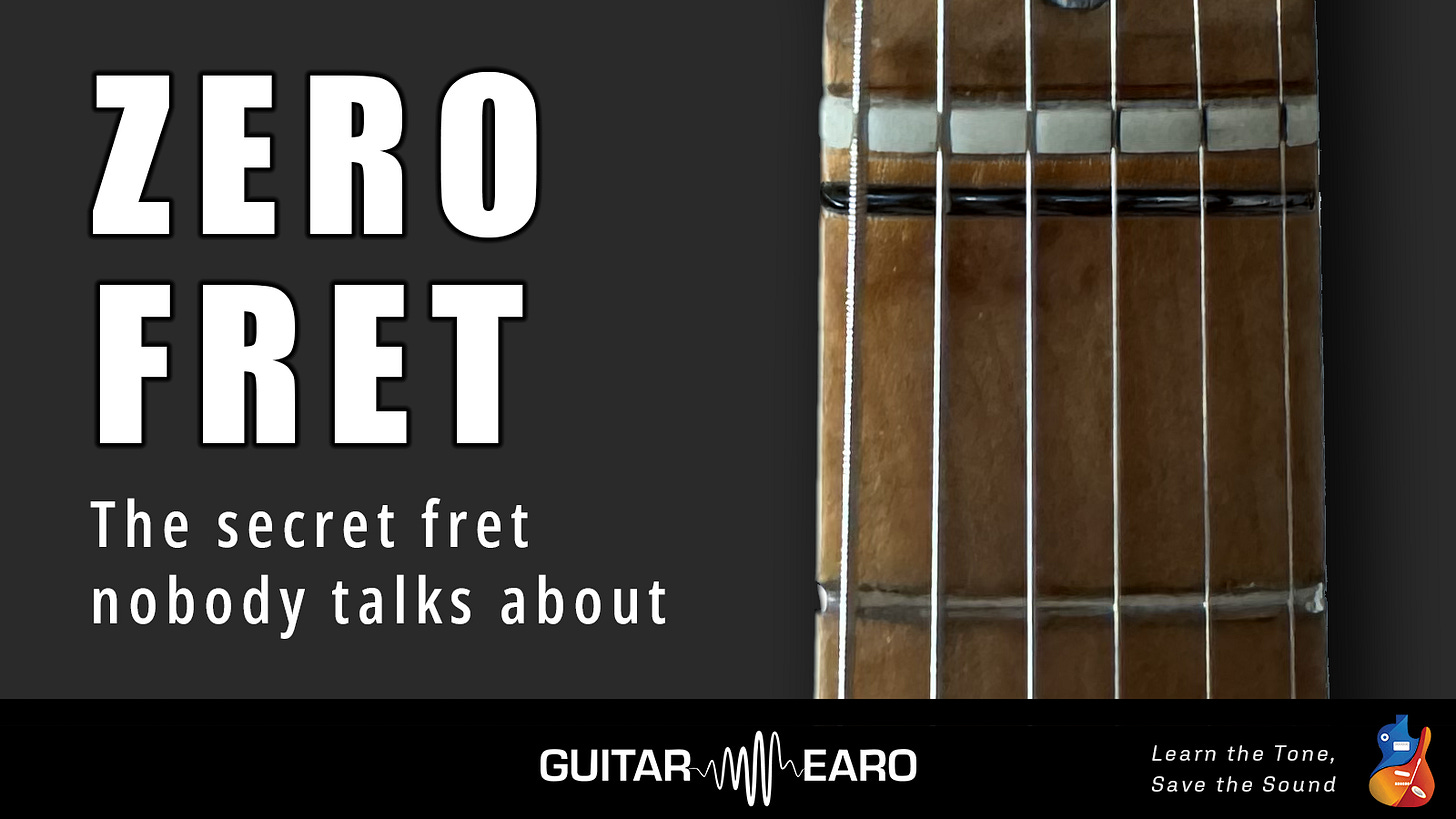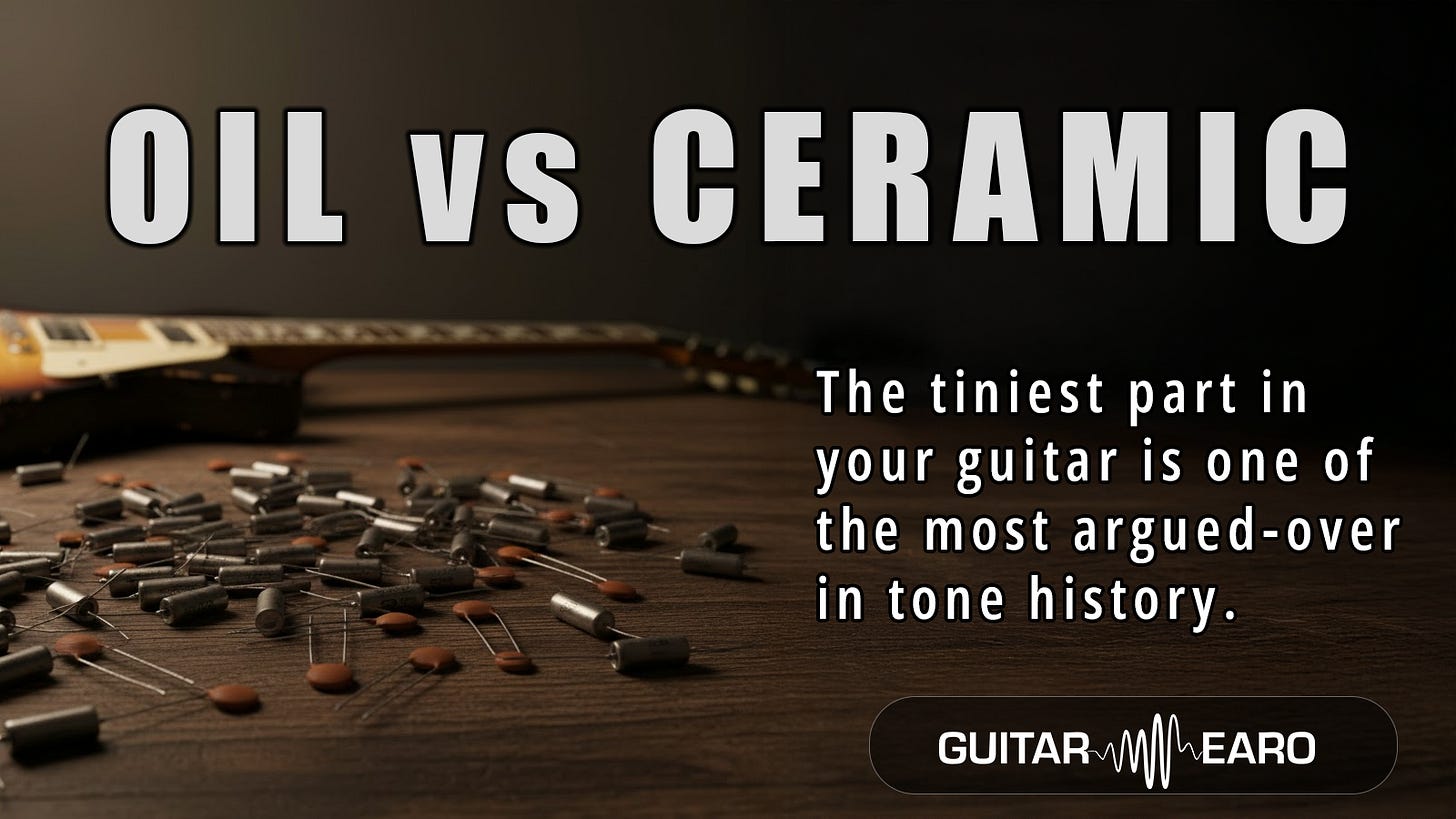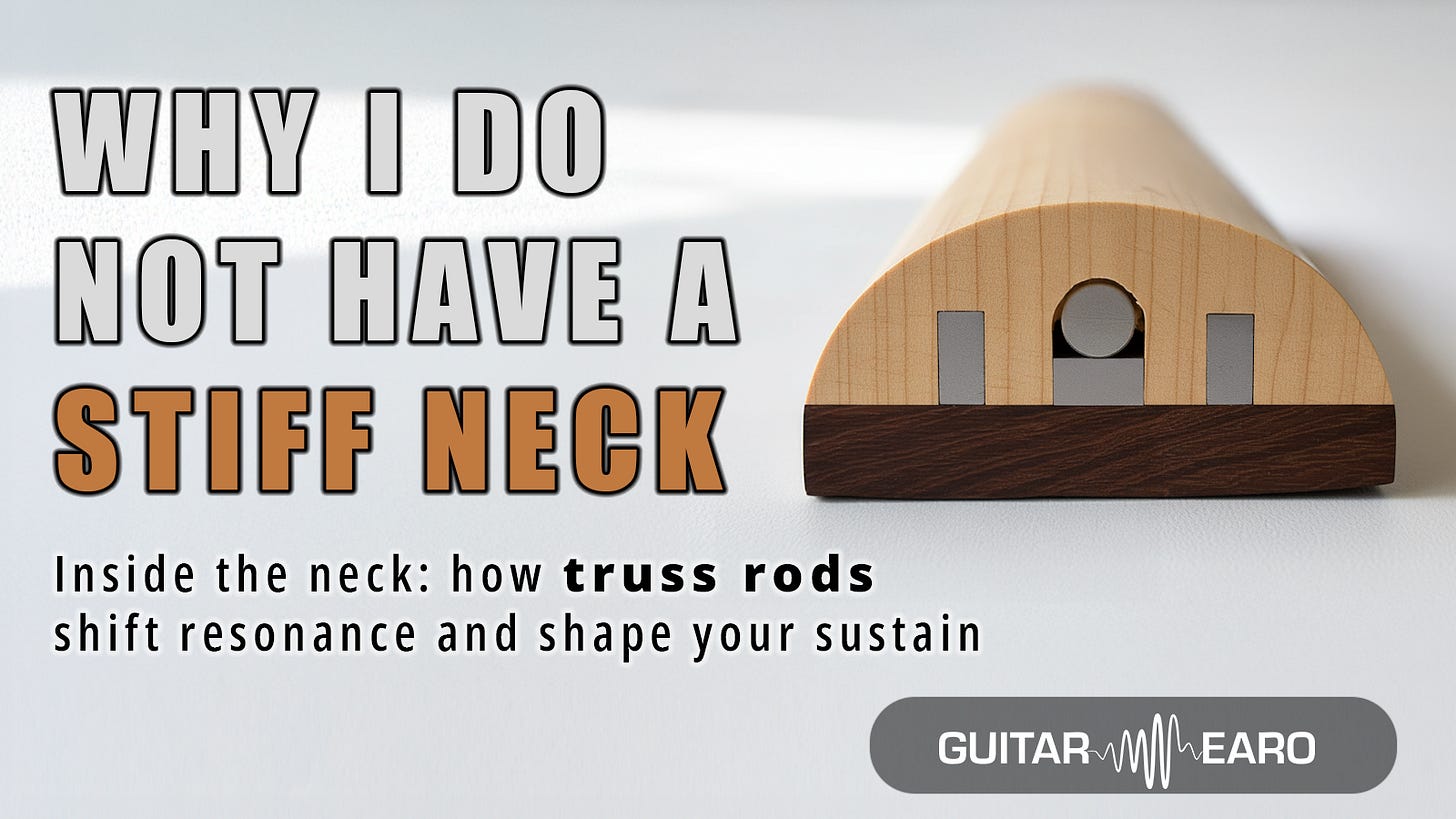Walk into any guitar shop and you will see nuts everywhere. Bone, plastic, brass, graphite. But sometimes, the nut is not really the nut at all. On certain guitars, especially classic European designs, plus a few Gretsch and Mosrite models, there is a “secret fret” placed before the first. This is the zero fret, and it has stirred one of the most enduring arguments in tone history .
What is a Zero Fret?
On a standard guitar, the strings rest on the nut, a strip of bone, plastic, or metal, which defines the string spacing and vibrating length. On a zero-fret guitar, however, the strings pass over the nut and rest on a fret placed directly in front of it. The nut becomes nothing more than a string spacer.
Result: open strings vibrate “metal to metal,” just like fretted notes, instead of “metal to bone/plastic.” In theory, this means open chords should sound indistinguishable from fretted ones.
The Promise of the Zero Fret
Proponents highlight three main advantages:
Consistency of tone: Open strings blend seamlessly with fretted notes, reducing the tonal “jump” between them.
Improved intonation: Because the zero fret defines the scale length precisely, notes at the first few frets are often more accurate.
Possible sustain benefits: Some claim the metal fret enhances ringing sustain compared to softer nut materials.
George Harrison’s early 1960s Gretsch Country Gentleman famously featured a zero fret, proof that this was not confined to budget guitars.
The Case Against
Critics are equally vocal:
Cheap stigma: Many low-cost European brands in the ’50s and ’60s (Höfner, Framus, Eko) used zero frets, cementing an association with “student guitars.”
Wear and buzz: If the zero fret wears down or is cut too low, it can produce a sitar-like buzz, far more noticeable than a worn nut.
Aesthetic purity: Traditionalists argue that the tonal contrast between open and fretted notes is part of the guitar’s character, and that the zero fret erases this difference.
A Hidden Thread in Guitar History
The zero fret is not just a quirky design choice; it is part of the broader narrative of how tiny construction details affect guitar culture. Just as debates rage over bolt-on vs. set-neck joints , tonewoods , or even capacitor types , the zero fret reminds us how obsessively guitarists chase (or imagine) tonal advantages in the smallest design tweaks.
Notably, many of the same European makers who embraced zero frets were also experimenting with alternative materials like plywood, plastics, even aluminium cores. In this sense, the zero fret belongs to a wave of mid-century guitar innovation that questioned every part of the instrument.
Why the Debate Still Matters
The enduring fascination with the zero fret says something profound: tone lives in the details. A single strip of metal placed before the first fret can influence not just sound, but also cultural perception. Is it a clever leveller that makes open strings ring true, or a budget gimmick that devalues tradition?
Today, boutique builders sometimes reintroduce zero frets precisely because they see tonal and playability benefits. Meanwhile, purists continue to avoid them, citing history and aesthetics. The argument is alive, not just in forums, but in how guitars are designed, sold, and mythologised.
The Takeaway
The nut is not always the nut. Sometimes it is just a guide, and the real starting point of your string is a fret. Whether you hear that as genius or heresy depends on your ears, your hands, and maybe your biases about what “proper” guitars should look like.
One thing is certain: if a tiny fret before the first can spark this much passion, it proves once again that guitar tone is never just about wood and wire. It is about culture, myth, and the endless search for the perfect note.



